Abstract
This paper records the results of detailed studies carried out over a two-year period on the transmission of Schistosoma haematobium in an area of Lake Province, Tanganyika. The ecology of a variety of snail habitats is described; and data on the biology of the principal molluscan host (Bulinus (Physopsis) nasutus productus), on seasonal fluctuations in its population density and associated cercarial infection rates, on its response to desiccation and on other aspects of population dynamics are presented and discussed.
Taking into consideration the seasonal fluctuation in snail numbers which occurs in the area and the snails' capacity to survive desiccation, it is considered that a substantial reduction in transmission of S. haematobium might be effected by application of a molluscicide timed so as to lower the population density before aestivation begins, followed by a second treatment when the habitats have been refilled by rainfall to reduce yet further the population that has survived the first treatment and subsequent desiccation. It is also suggested that a combination of methods directed against two stages in the schistosome life-cycle—the snail and the miracidium—by application of molluscicides and treatment of infected persons might be more efficacious than an attempt merely to reduce snail density and alter the population structure.
Full text
PDF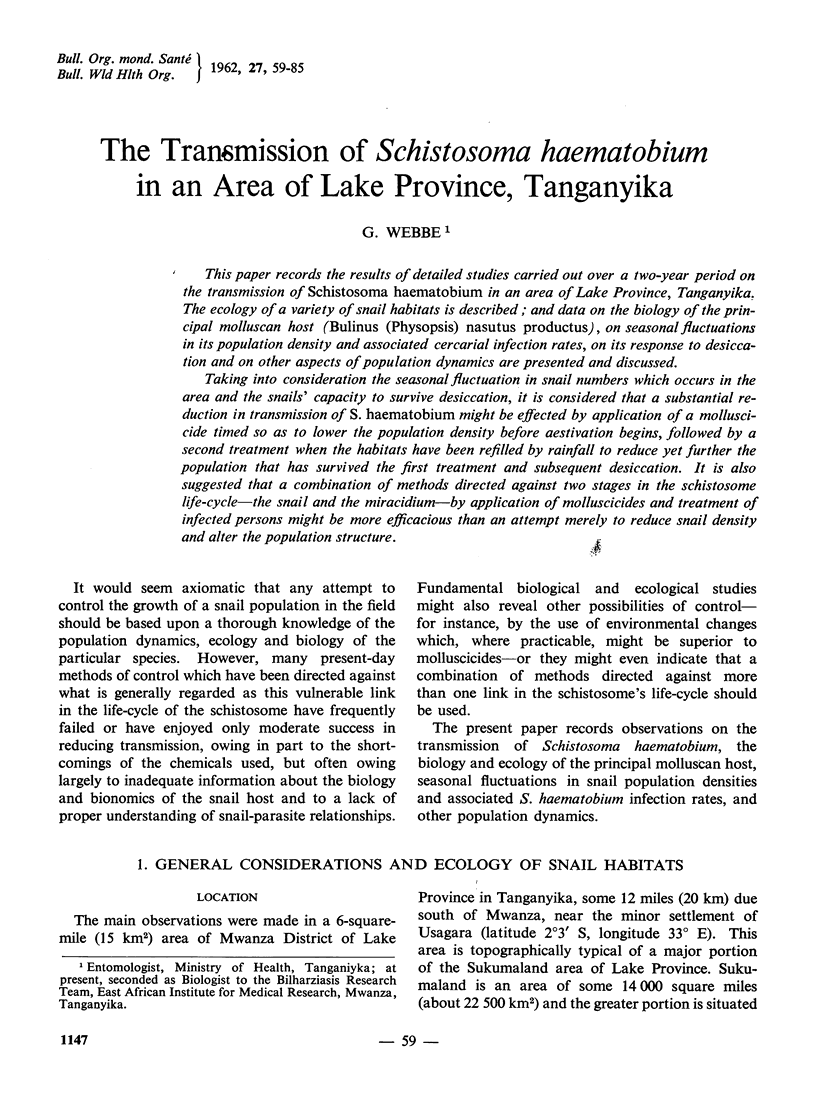
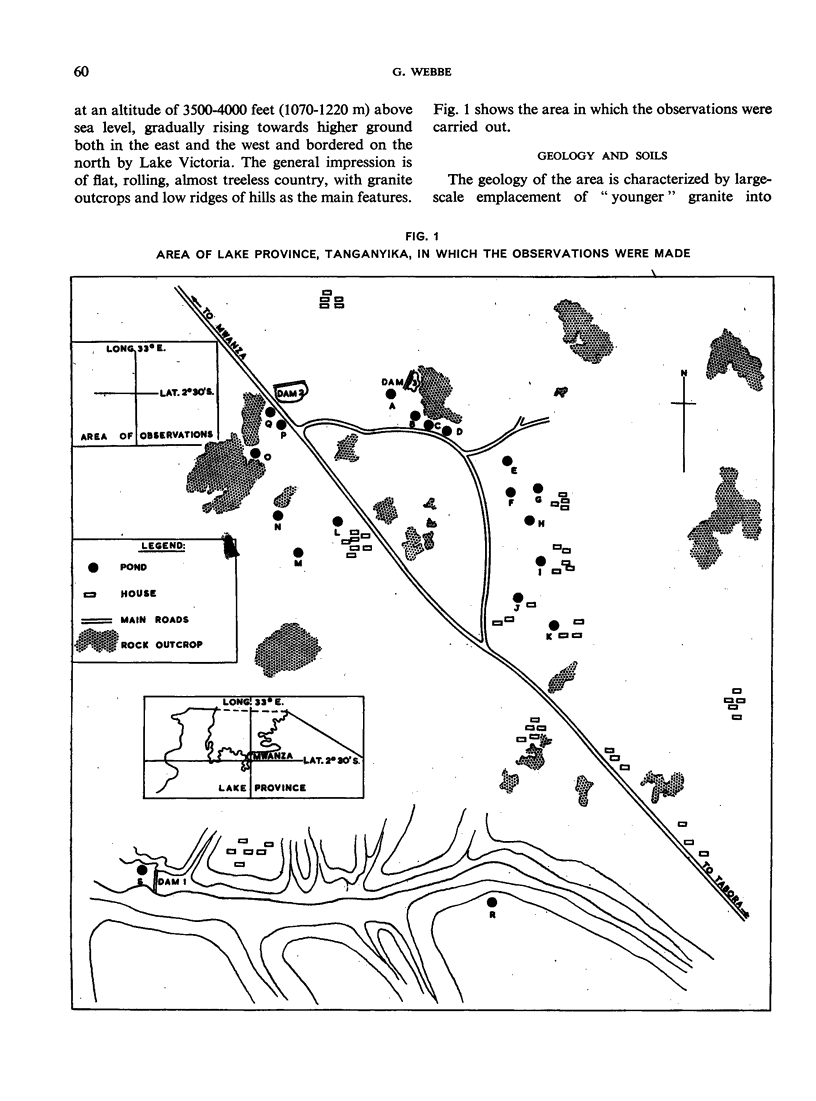
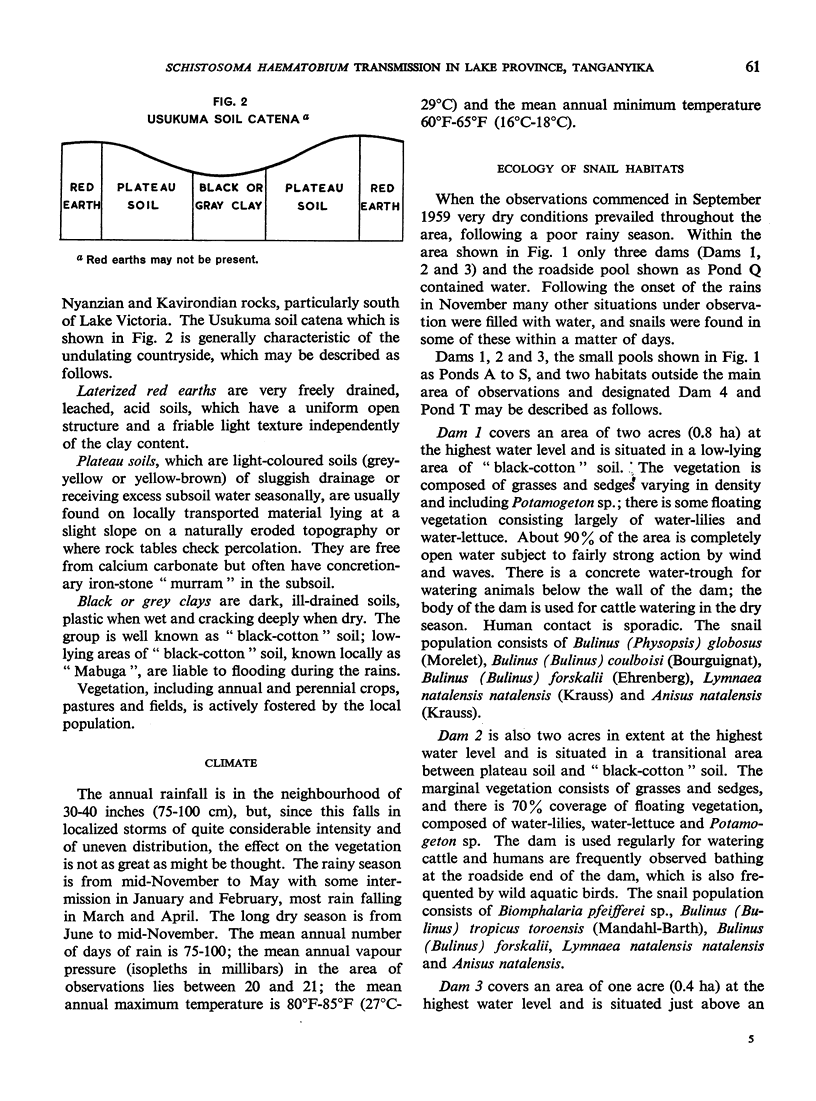
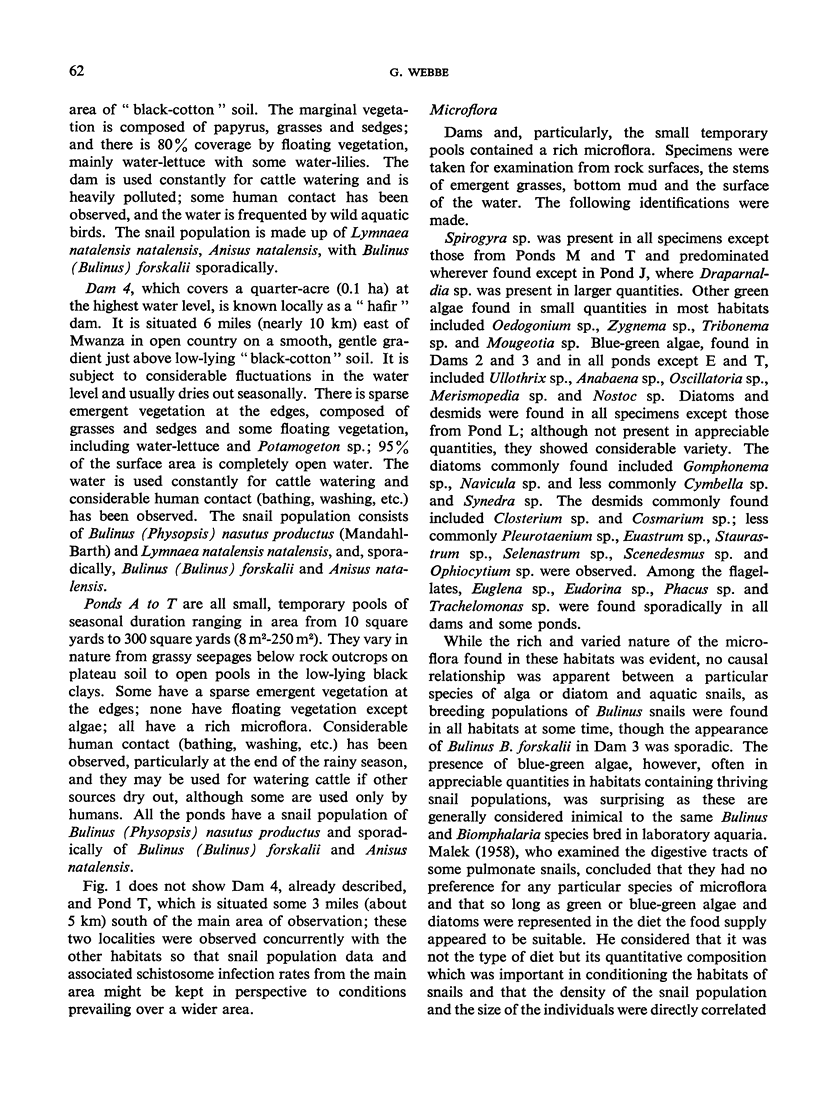
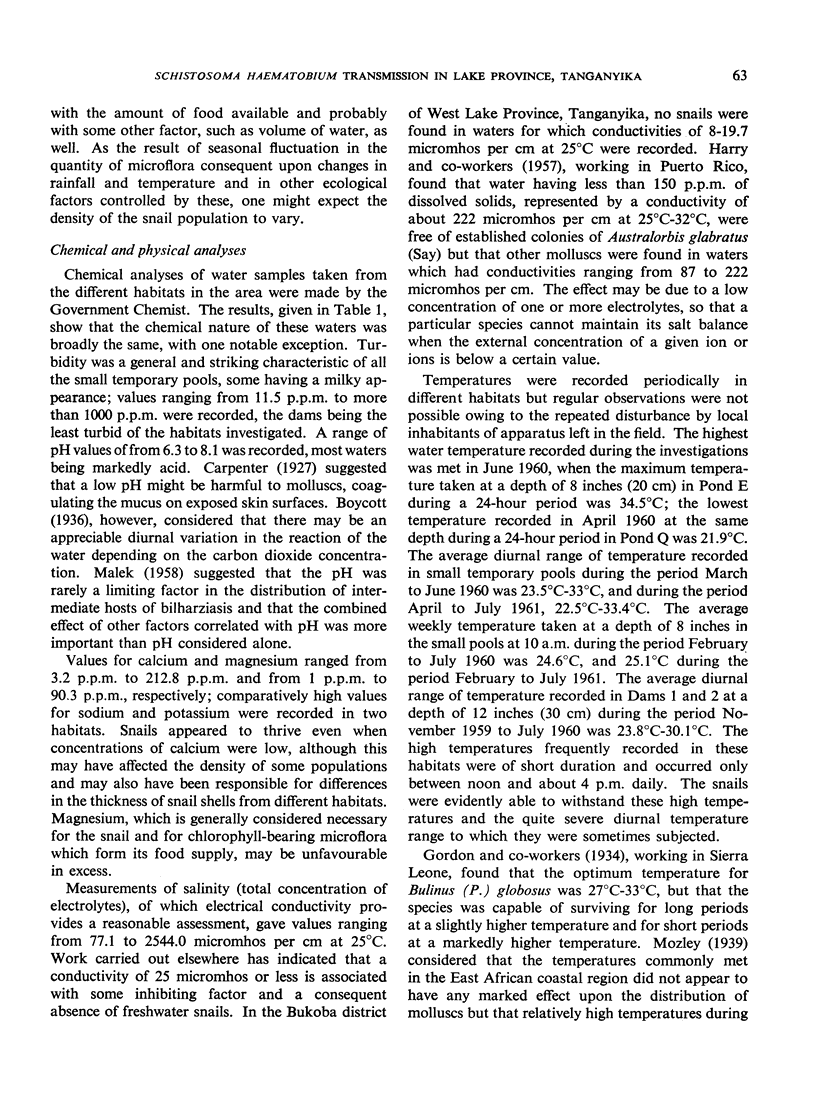
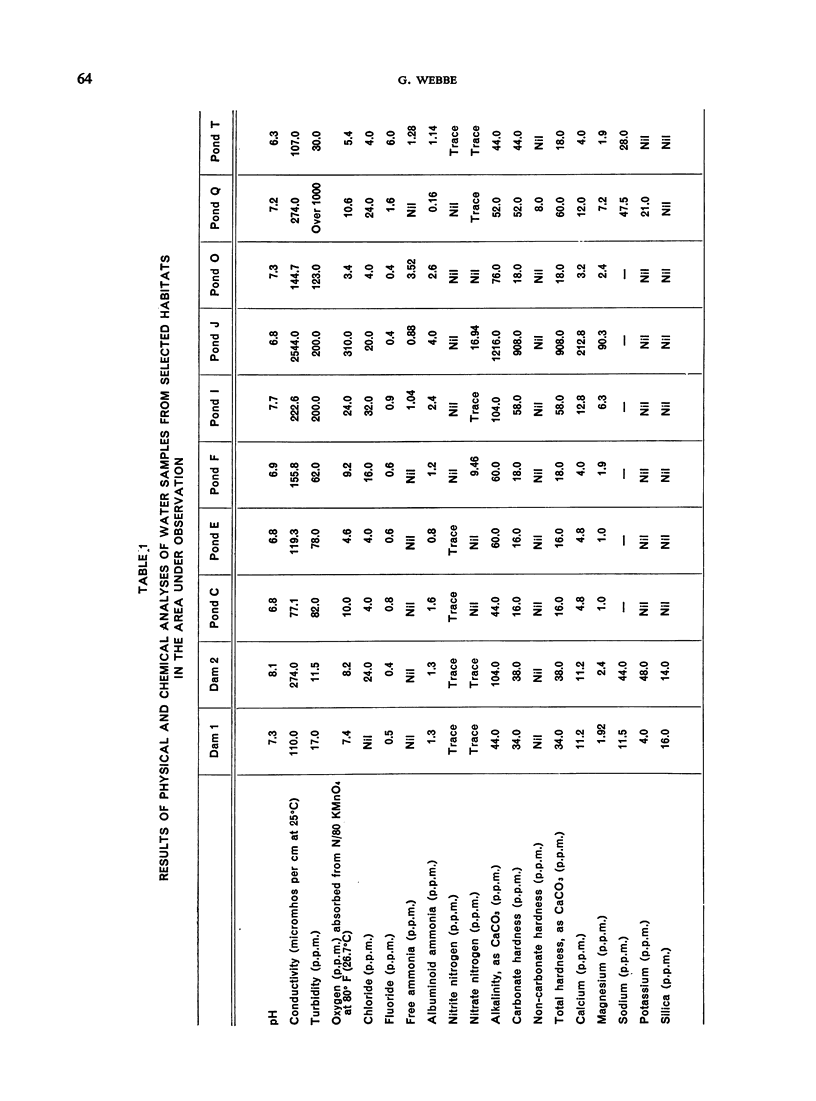
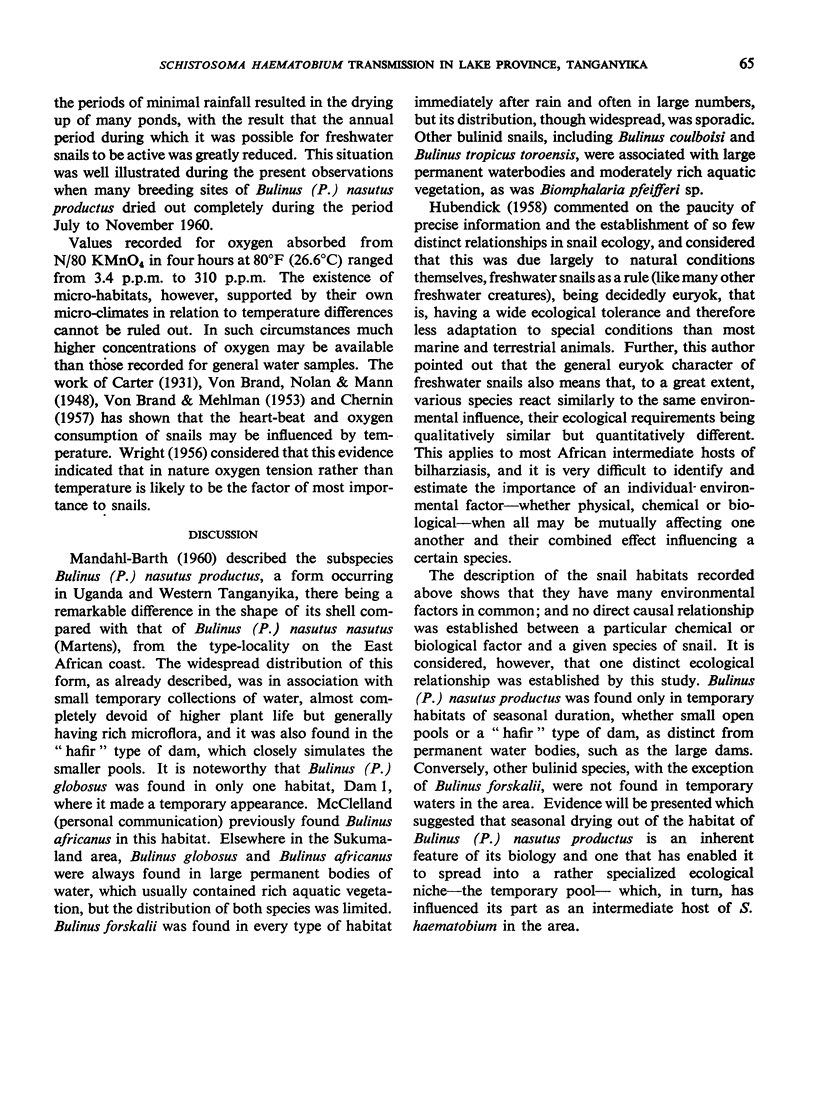
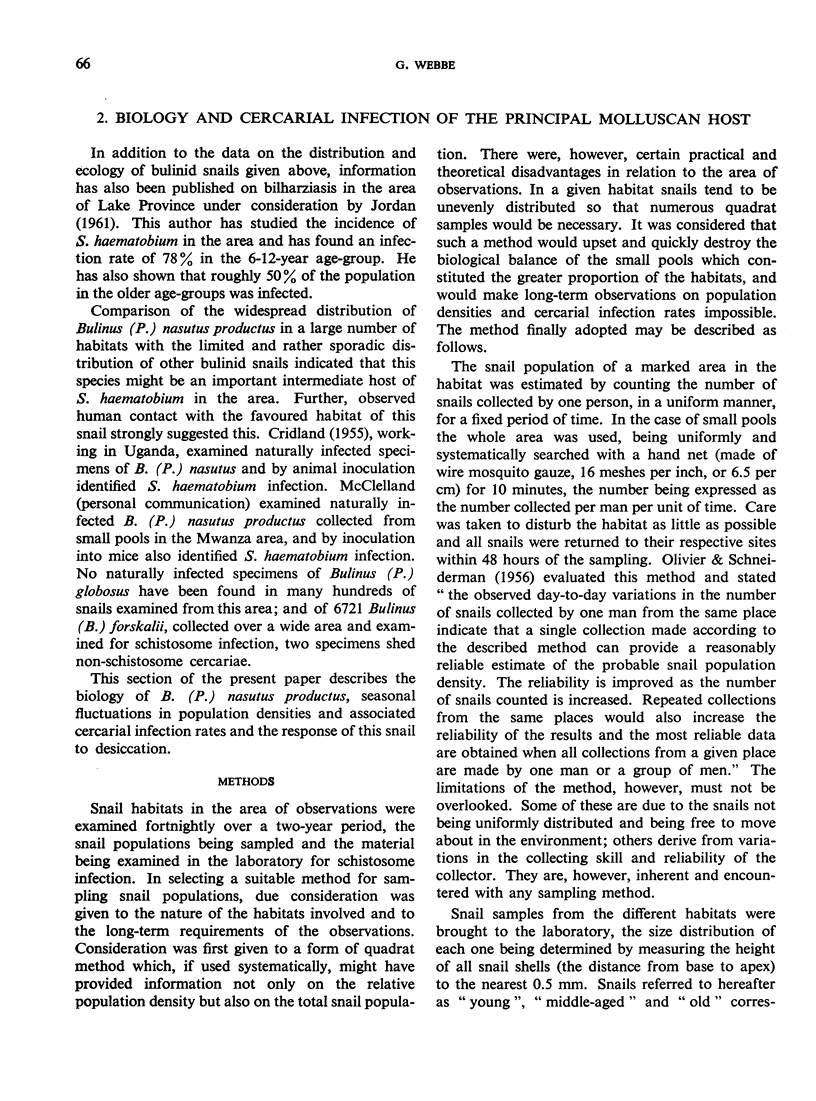
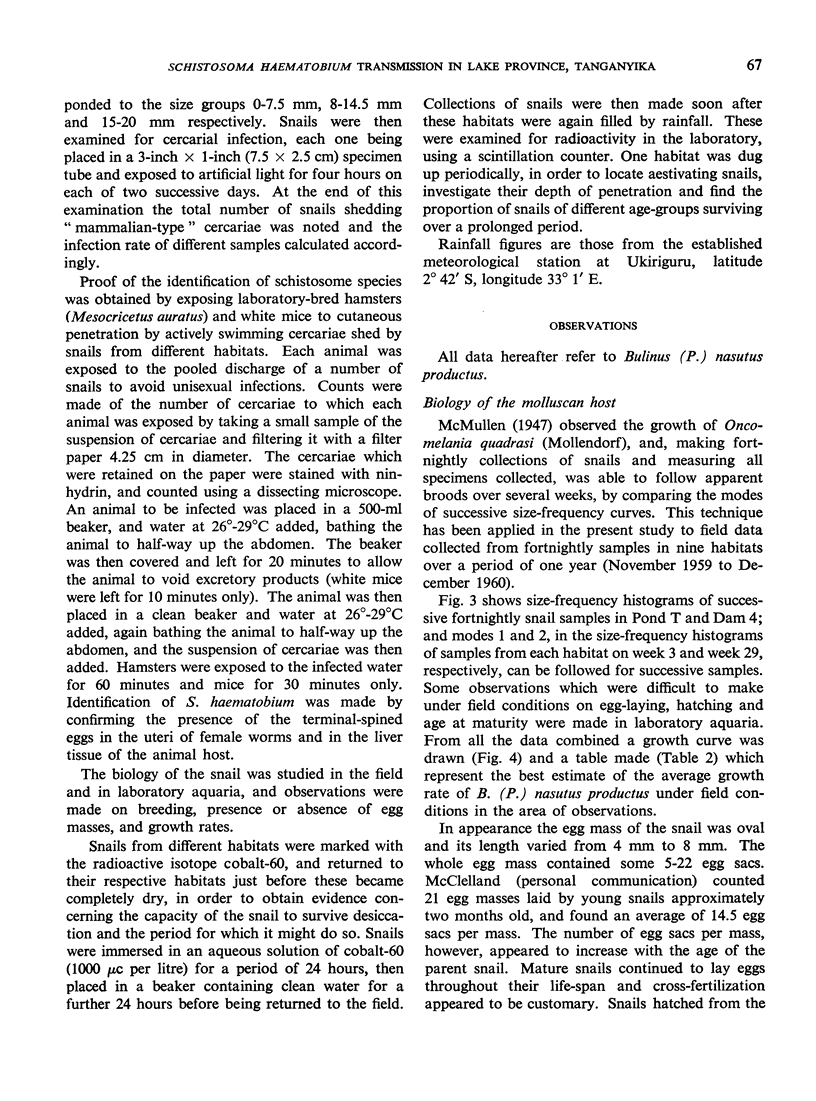
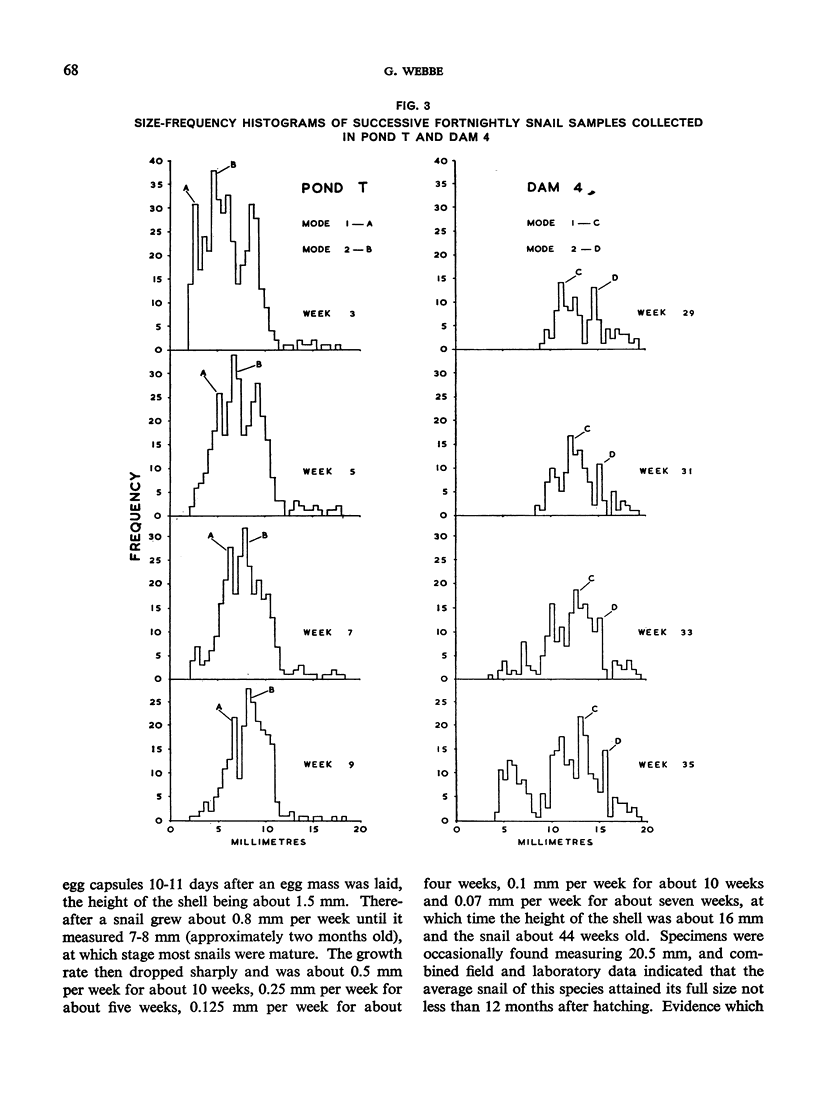
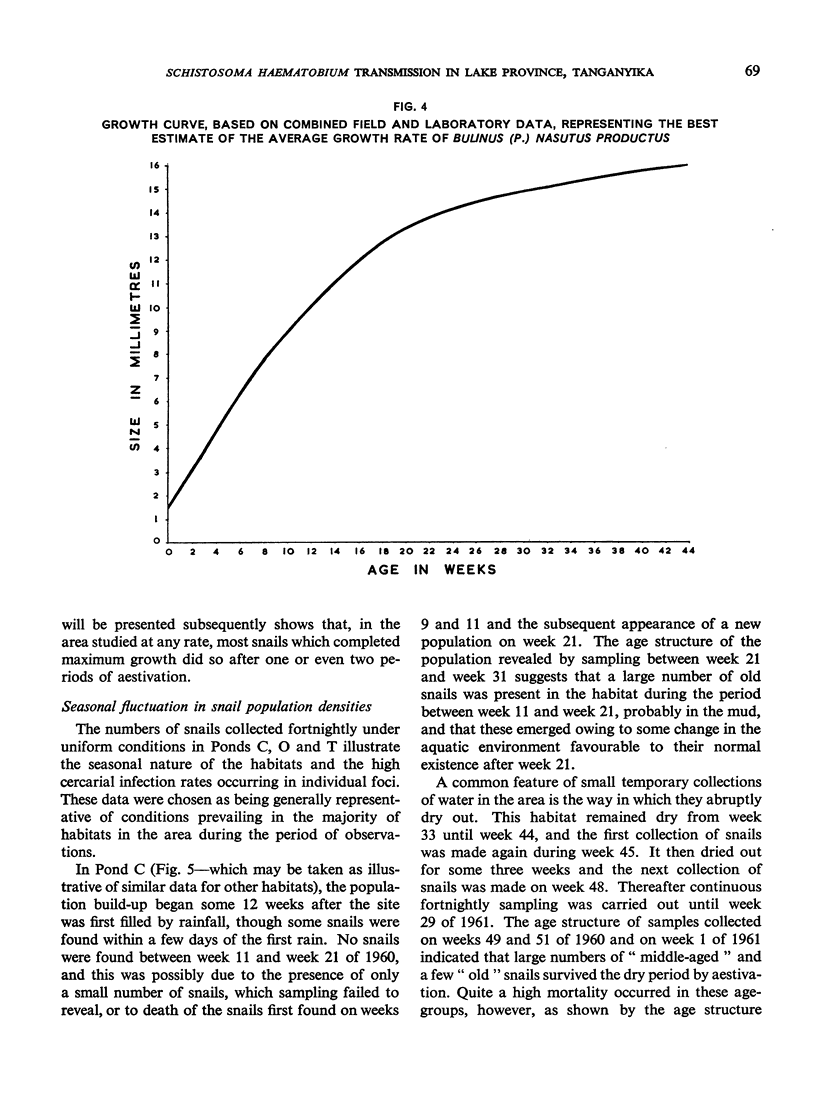
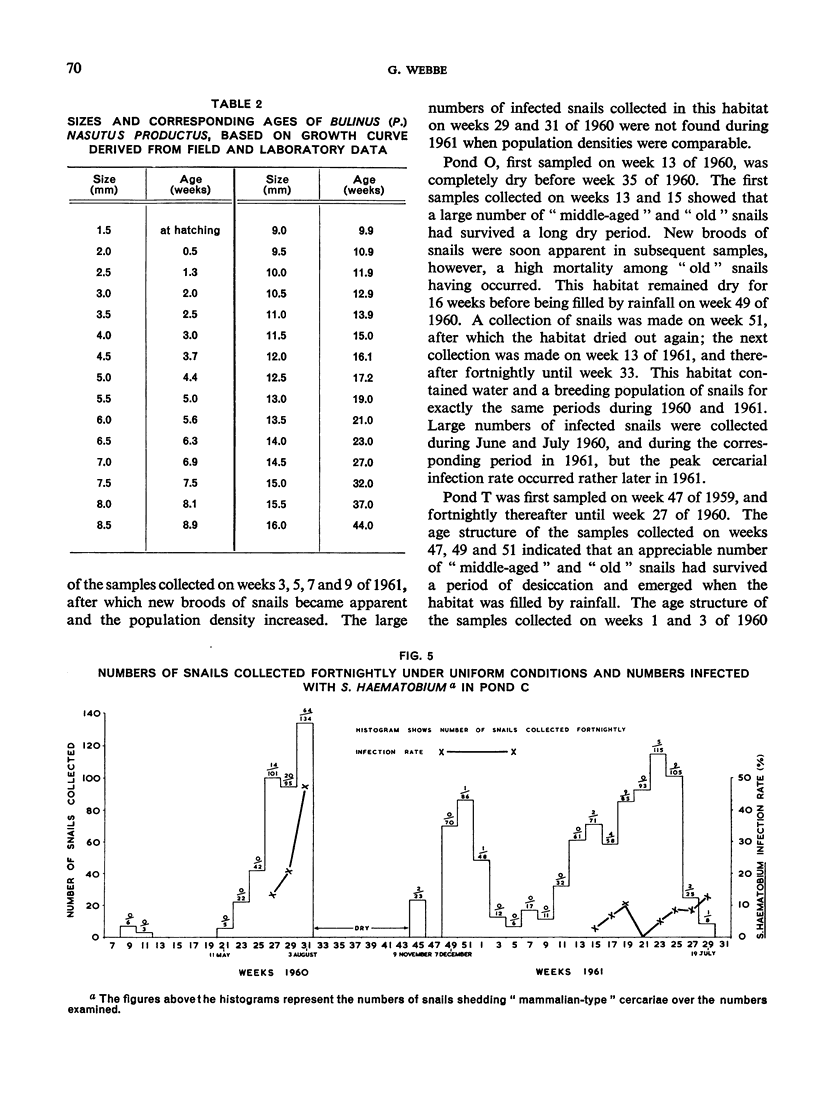
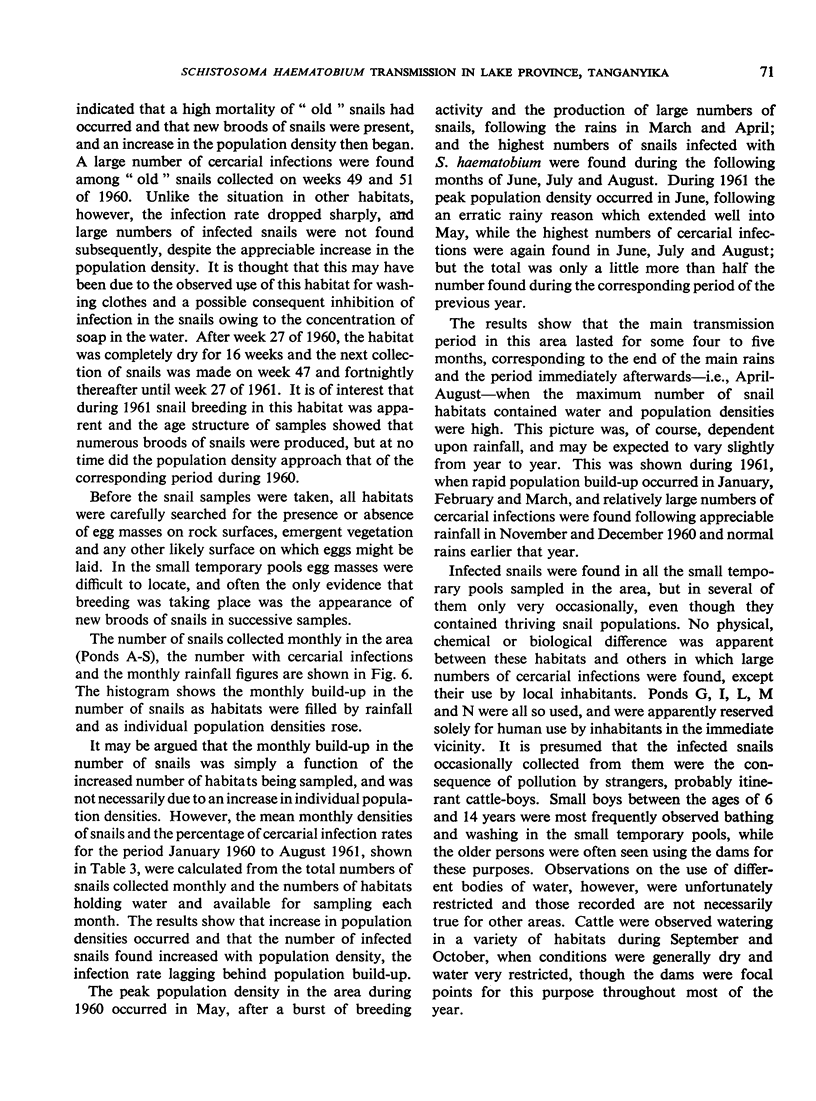
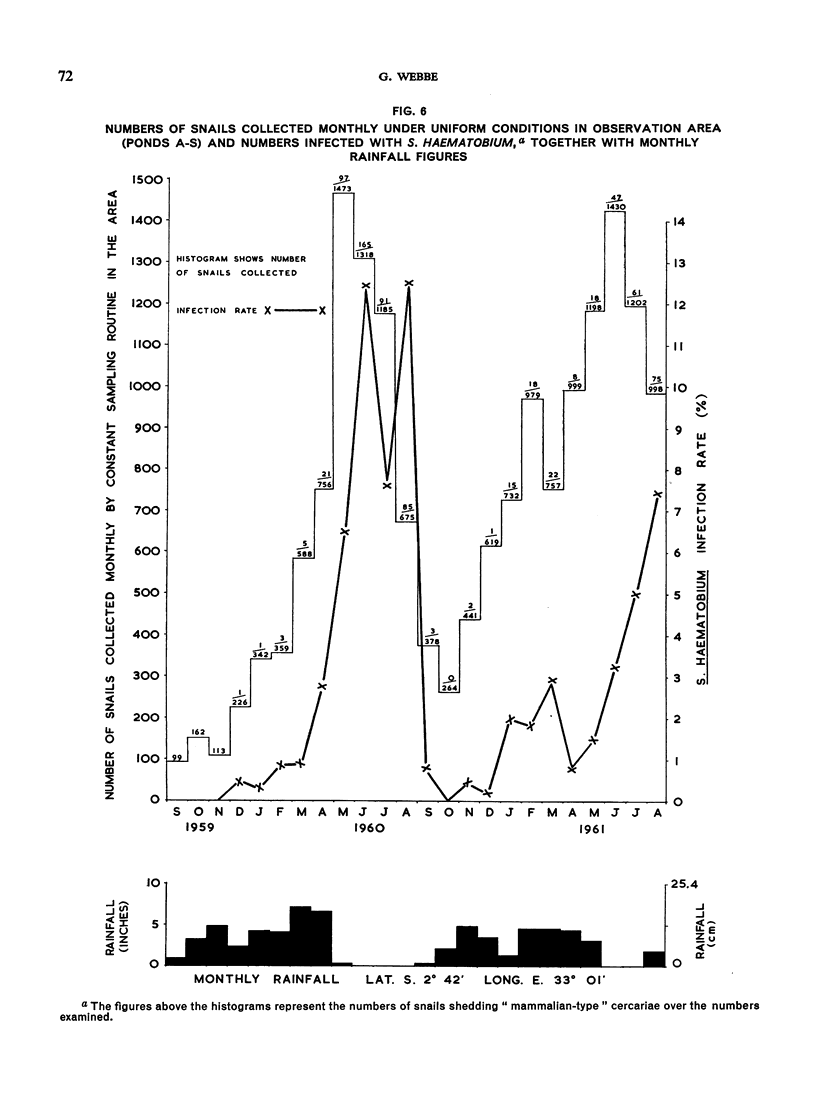
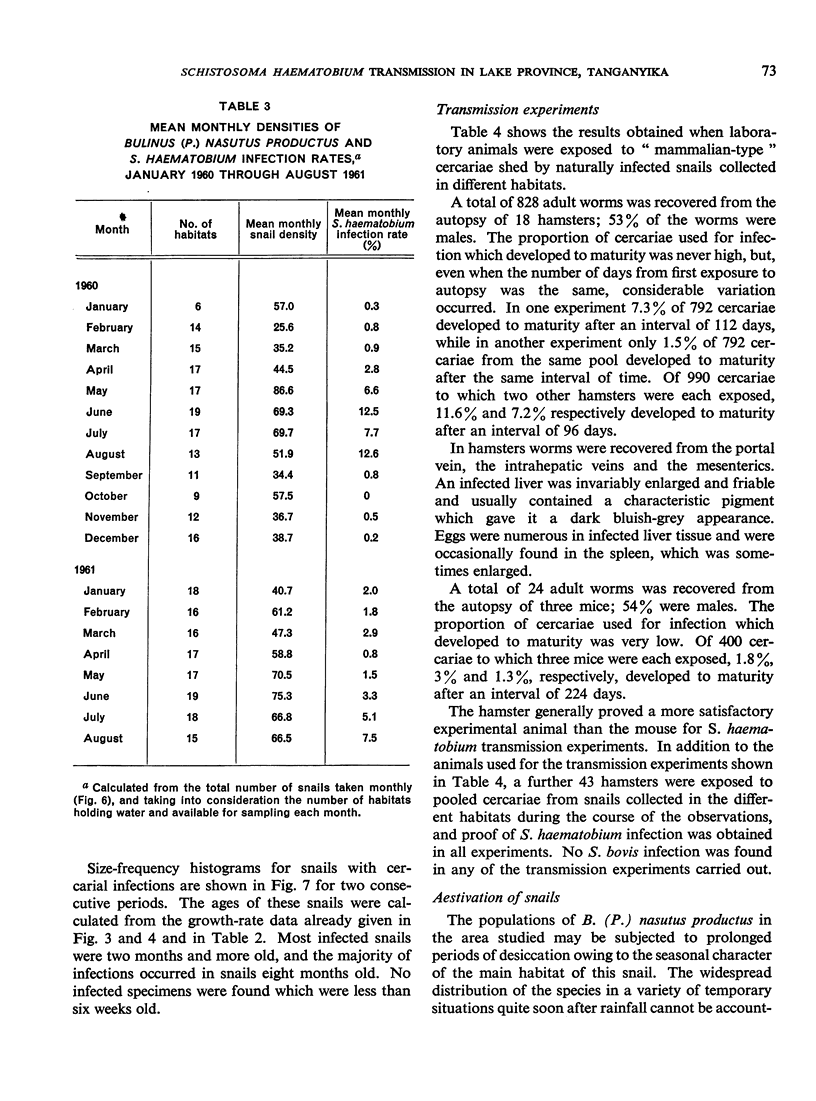
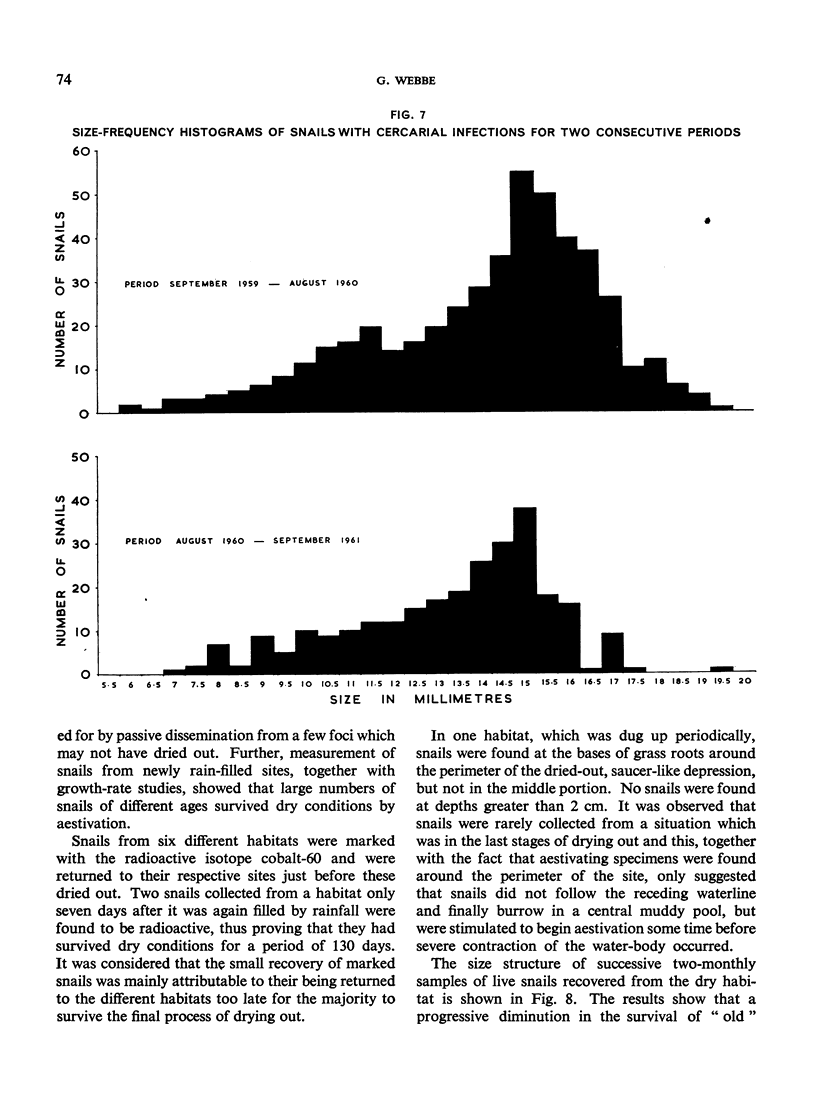
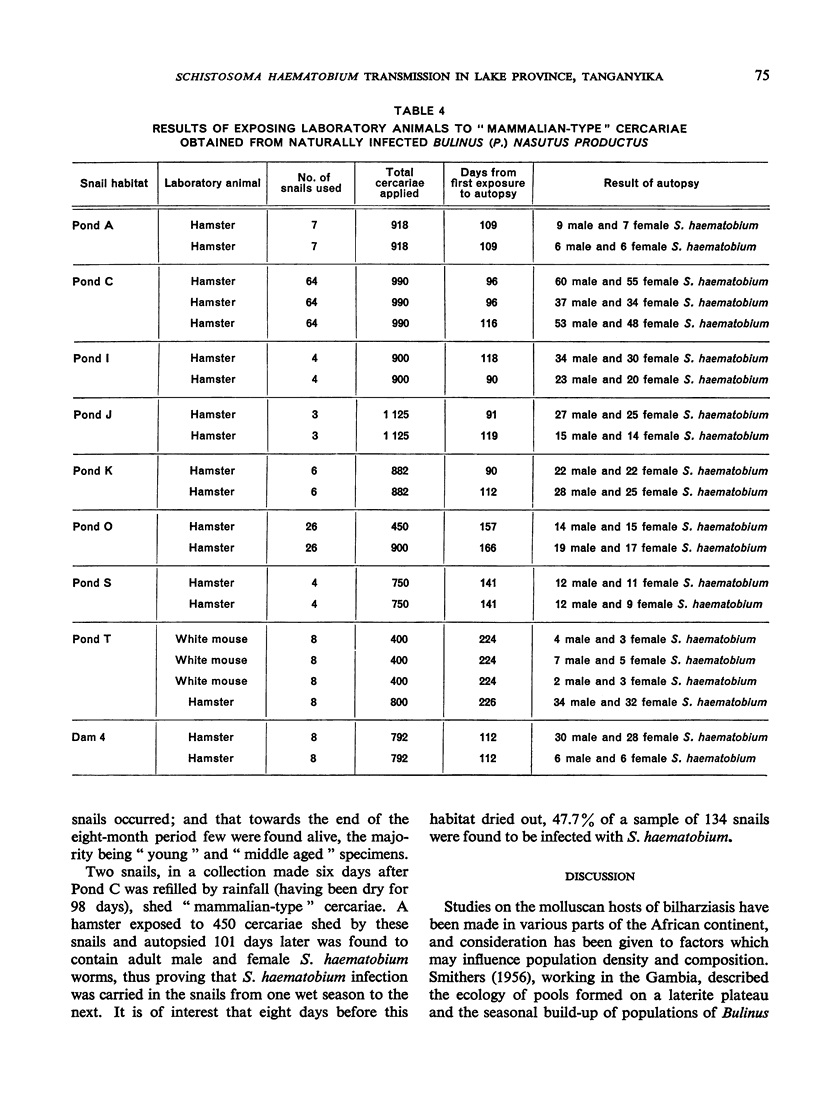
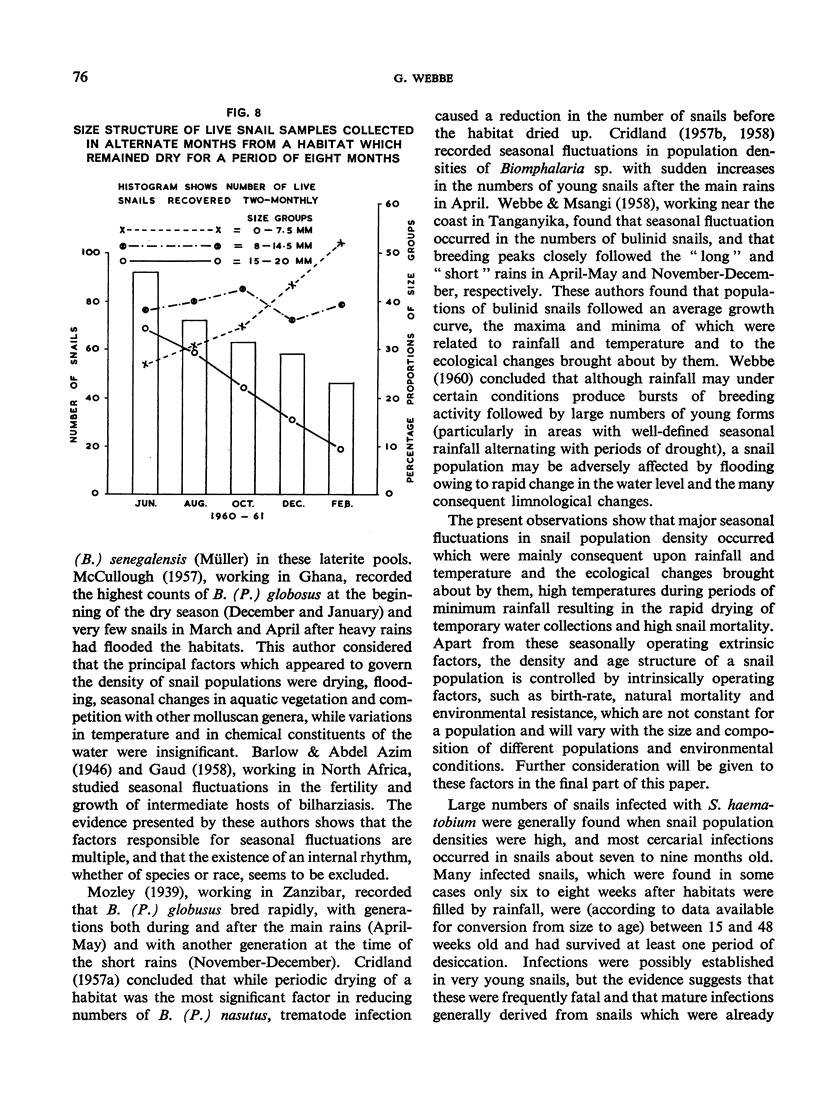
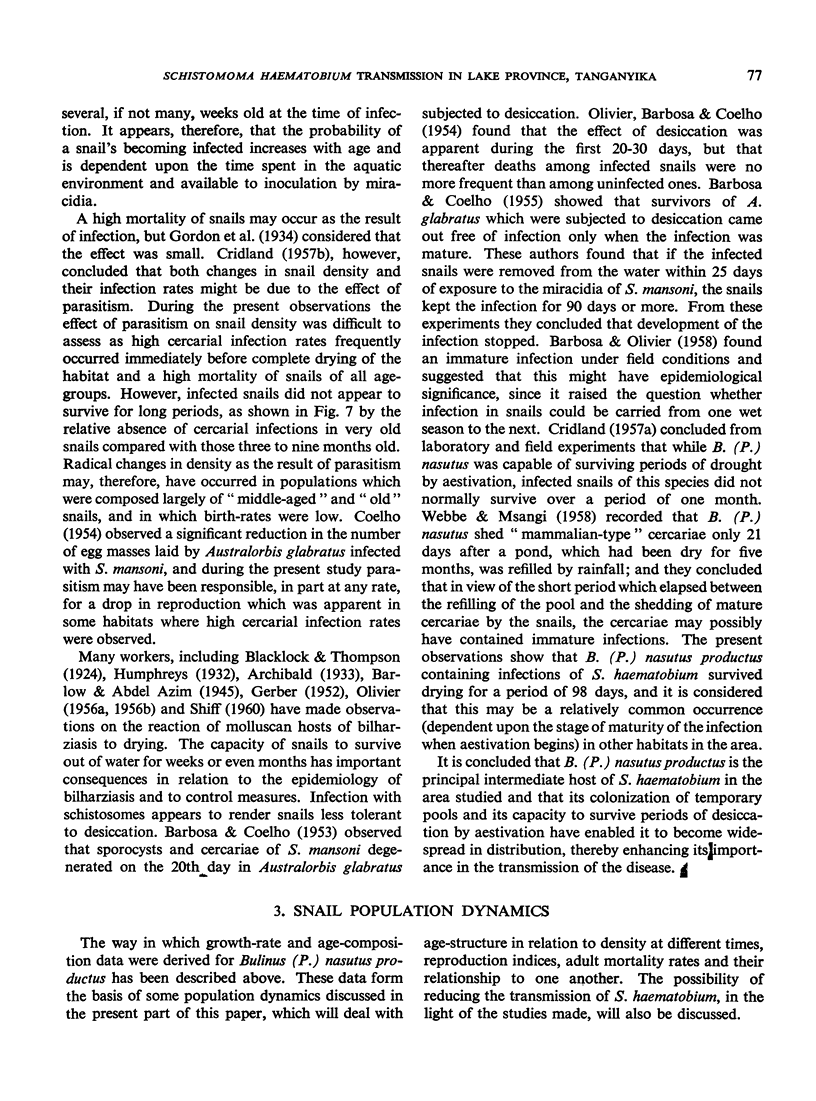
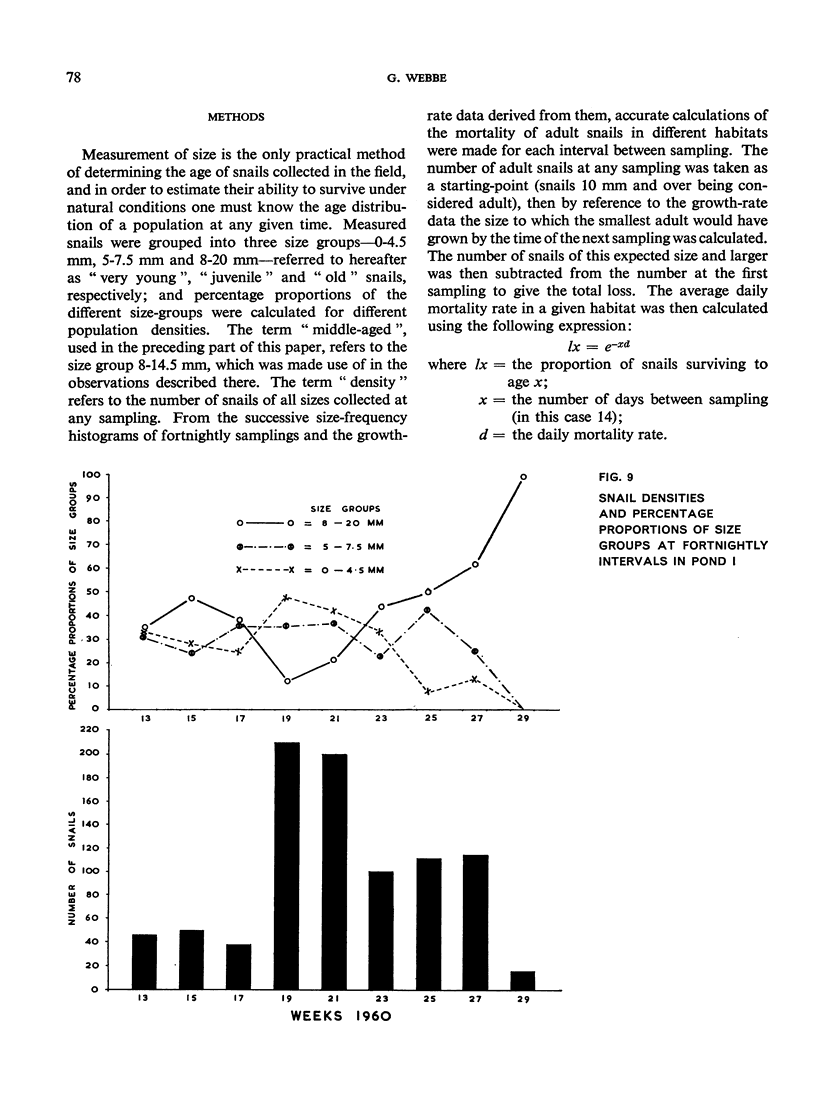
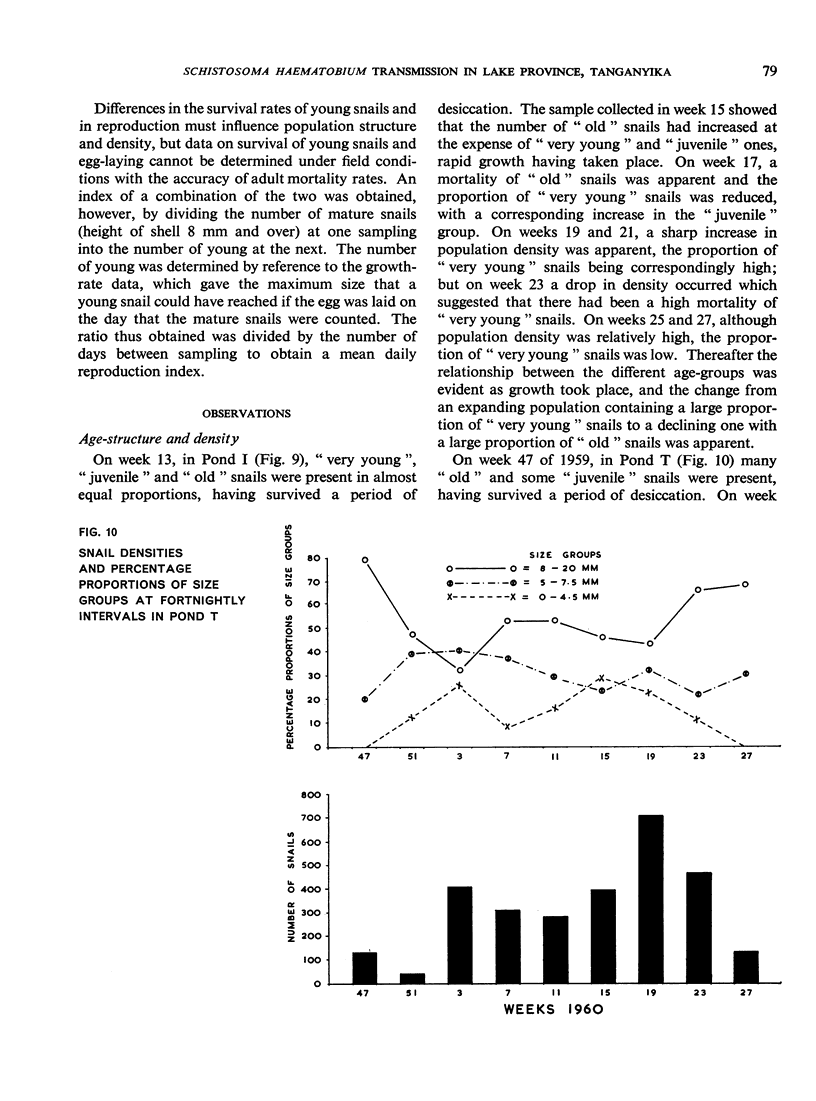
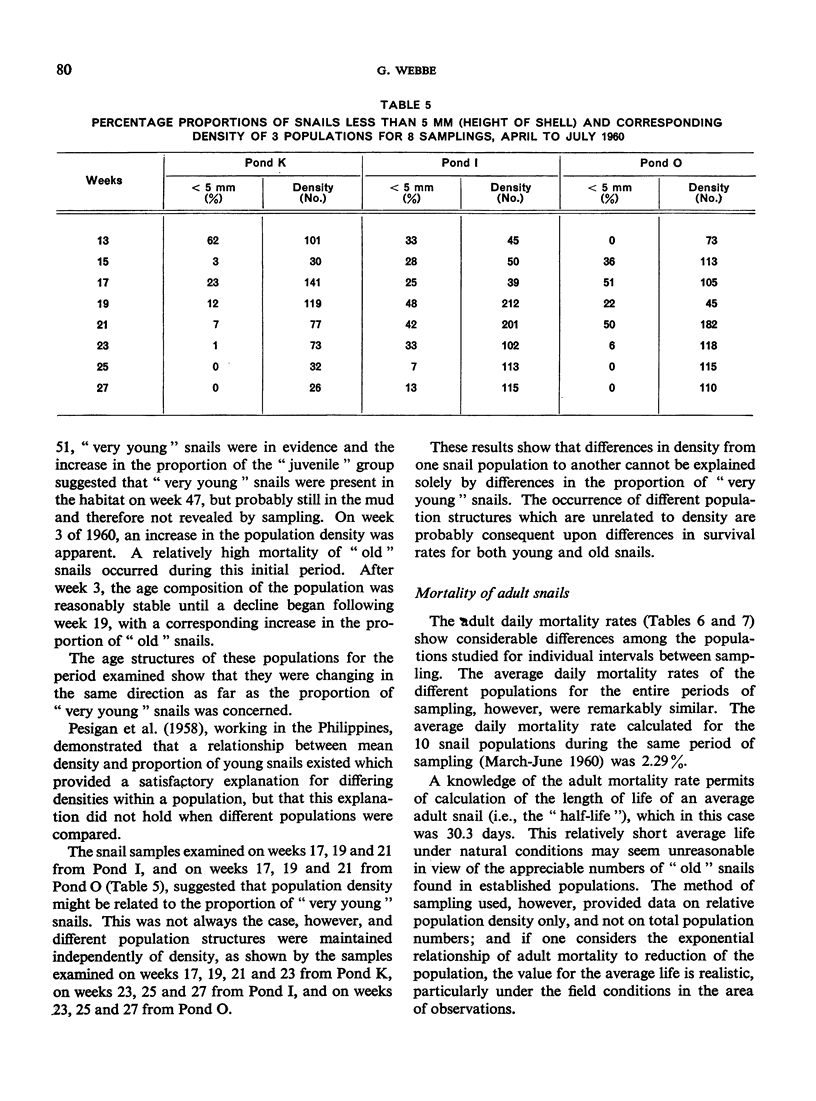
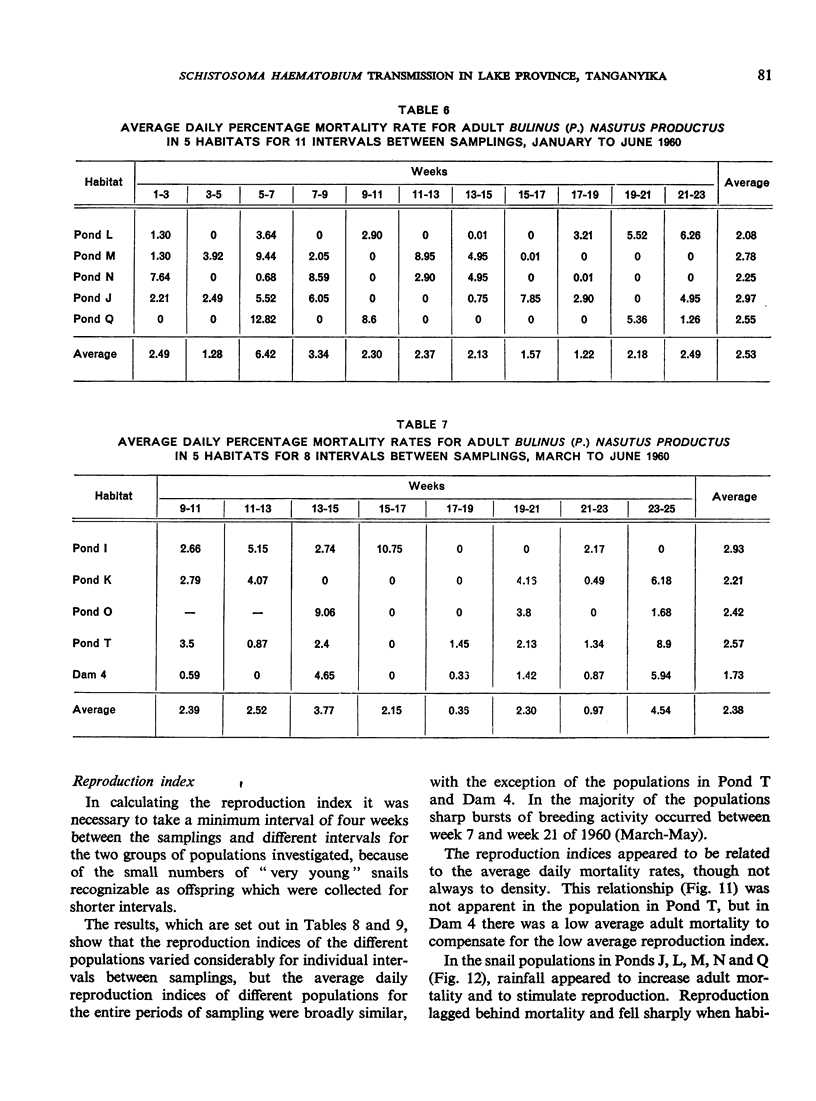
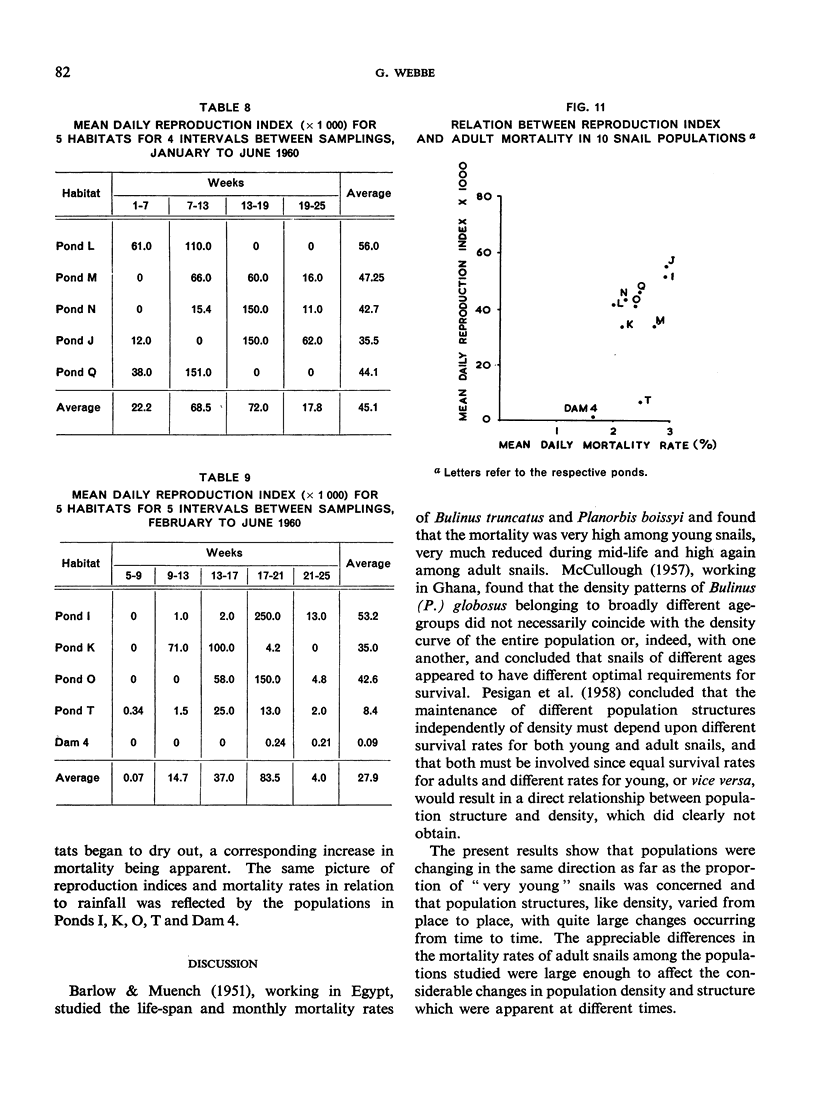
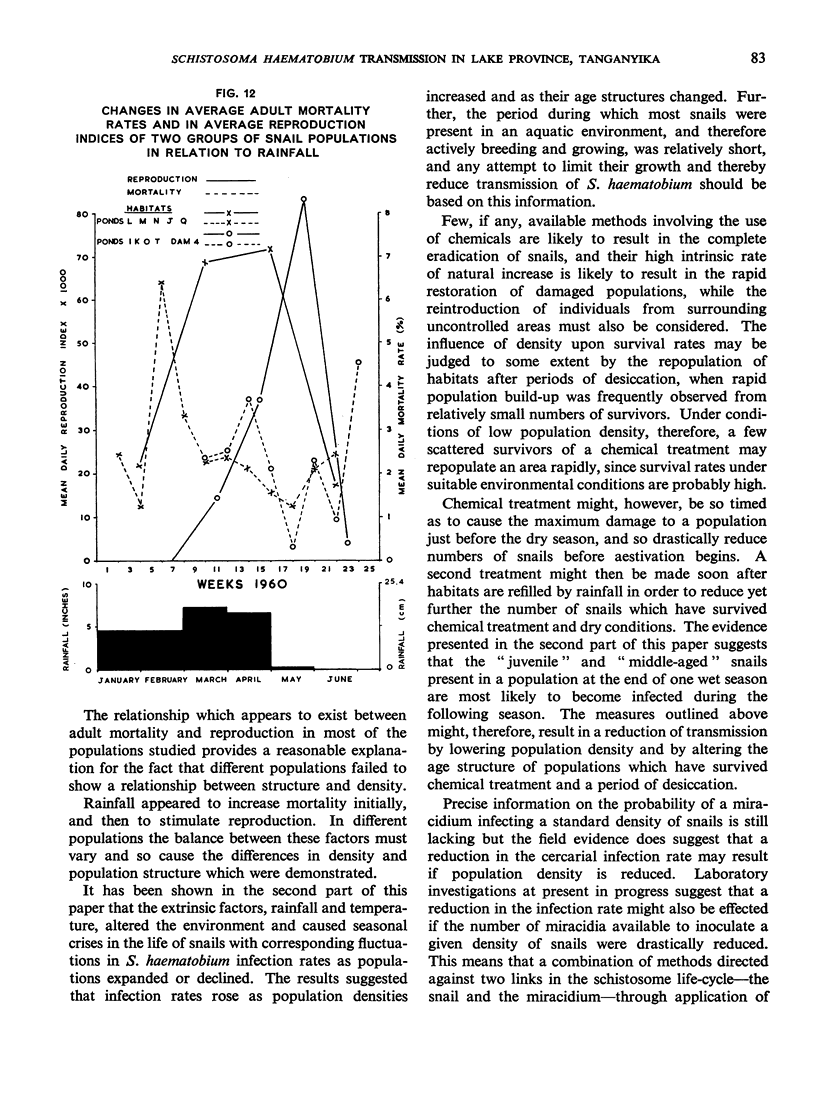
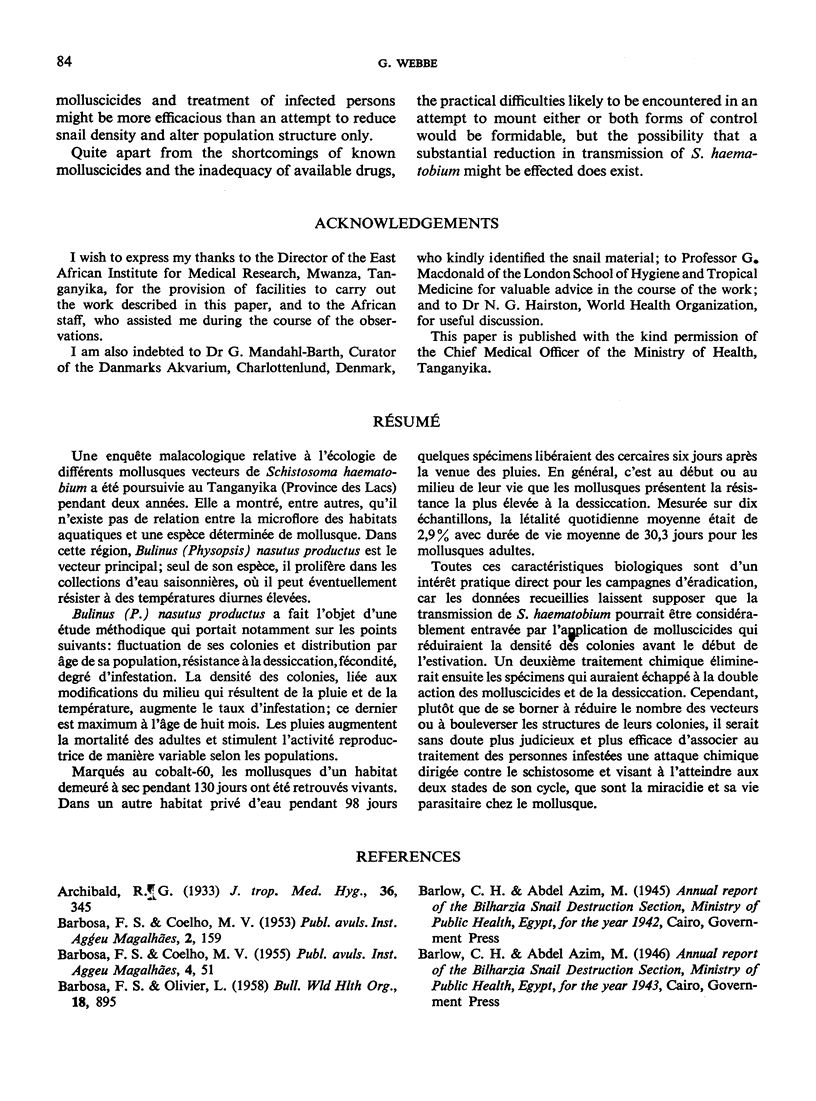
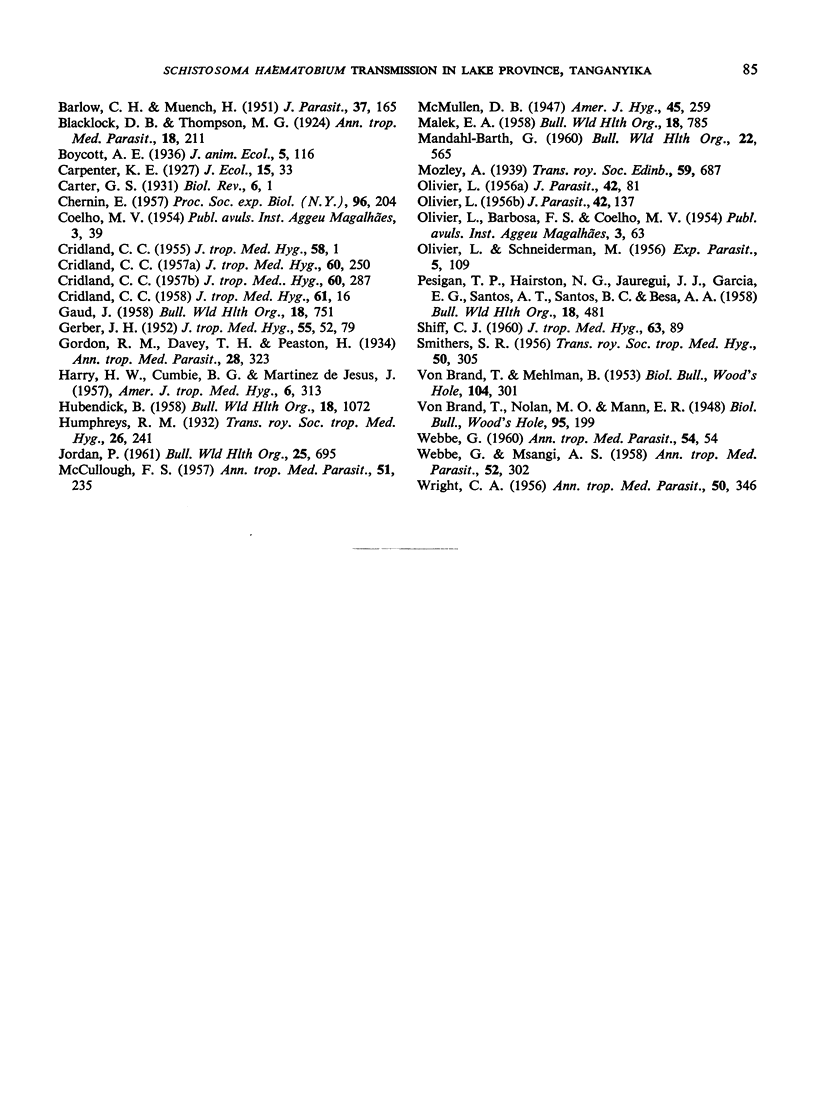
Selected References
These references are in PubMed. This may not be the complete list of references from this article.
- ABDEL-MALEK E. Factors conditioning the habitat of bilharziasis intermediate hosts of the family Planorbidae. Bull World Health Organ. 1958;18(5-6):785–818. [PMC free article] [PubMed] [Google Scholar]
- BARBOSA F. S., OLIVIER L. Studies on the snail vectors of bilharziasis mansoni in North-eastern Brazil. Bull World Health Organ. 1958;18(5-6):895–908. [PMC free article] [PubMed] [Google Scholar]
- BARLOW C. H., MUENCH H. Life span and monthly mortality rate of Bulinus truncatus and Planorbis biossyi, the intermediate hosts of schistosomiasis in Egypt. J Parasitol. 1951 Apr;37(2):165–173. [PubMed] [Google Scholar]
- CHERNIN E. A method of securing bacteriologically sterile snails (Australorbis glabratus). Proc Soc Exp Biol Med. 1957 Oct;96(1):204–210. doi: 10.3181/00379727-96-23433. [DOI] [PubMed] [Google Scholar]
- CRIDLAND C. C. Ecological factors affecting the numbers of snails in a permanent stream. J Trop Med Hyg. 1958 Jan;61(1):16–20. [PubMed] [Google Scholar]
- CRIDLAND C. C. Ecological factors affecting the numbers of snails in permanent bodies of water. J Trop Med Hyg. 1957 Oct;60(10):250–256. [PubMed] [Google Scholar]
- CRIDLAND C. C. Ecological factors affecting the numbers of snails in temporary bodies of water. J Trop Med Hyg. 1957 Dec;60(12):287–293. [PubMed] [Google Scholar]
- CRIDLAND C. C. The experimental infection of several species of African freshwater snails with Schistosoma mansoni and S. haematobium. J Trop Med Hyg. 1955 Jan;58(1):1–11. [PubMed] [Google Scholar]
- GAUD J. Rhythmes biologiques des mollusques vecteurs des bilharzioses; facteurs saisonniers et climatiques influençant le cycle de reproduction de Bulinus truncatus et de Planorbarius metidjensis en Afrique du Nord. Bull World Health Organ. 1958;18(5-6):751–769. [PMC free article] [PubMed] [Google Scholar]
- GERBER J. H. Bilharzia in Boajibu. I. J Trop Med Hyg. 1952 Mar;55(3):52–58. [PubMed] [Google Scholar]
- HARRY H. W., CUMBIE B. G., MARTINEZ DE JESUS J. Studies on the quality of fresh water of Puerto Rico relative to the occurrence of Australorbis glabratus (Say). Am J Trop Med Hyg. 1957 Mar;6(2):313–322. doi: 10.4269/ajtmh.1957.6.313. [DOI] [PubMed] [Google Scholar]
- HUBENDICK B. Factors conditioning the habitat of freshwater snails. Bull World Health Organ. 1958;18(5-6):1072–1080. [PMC free article] [PubMed] [Google Scholar]
- MANDAHL-BARTH G. Intermediate hosts of Schistosoma in Africa. Some recent information. Bull World Health Organ. 1960;22:565–573. [PMC free article] [PubMed] [Google Scholar]
- McCULLOUGH F. S. The seasonal density of populations of Bulinus (Physopsis) globosus and B. forskalii in natural habitats in Ghana. Ann Trop Med Parasitol. 1957 Sep;51(3):235–248. doi: 10.1080/00034983.1957.11685812. [DOI] [PubMed] [Google Scholar]
- OLIVIER L. Observations on vectors of schistosomiasis mansoni kept out of water in the laboratory. I. J Parasitol. 1956 Apr;42(2):137–146. [PubMed] [Google Scholar]
- OLIVIER L., SCHNEIDERMAN M. A method for estimating the density of aquatic snail populations. Exp Parasitol. 1956 Mar;5(2):109–117. doi: 10.1016/0014-4894(56)90008-x. [DOI] [PubMed] [Google Scholar]
- OLIVIER L. The location of the schistosome vectors, Australorbis glabratus and Tropicorbis centimetralis, on and in the soil on dry natural habitats. J Parasitol. 1956 Feb;42(1):81–85. [PubMed] [Google Scholar]
- PESIGAN T. P., HAIRSTON N. G., JAUREGUI J. J., GARCIA E. G., SANTOS A. T., SANTOS B. C., BESA A. A. Studies on Schistosoma japonicum infection in the Philippines. 2. The molluscan host. Bull World Health Organ. 1958;18(4):481–578. [PMC free article] [PubMed] [Google Scholar]
- SHIFF C. J. Observations on the capability of freshwater vector snails to survive dry conditions. J Trop Med Hyg. 1960 Apr;63:89–93. [PubMed] [Google Scholar]
- WEBBE G., MSANGI A. S. Observations on three species of Bulinus on the east coast of Africa. Ann Trop Med Parasitol. 1958 Oct;52(3):302–314. doi: 10.1080/00034983.1958.11685870. [DOI] [PubMed] [Google Scholar]
- WEBBE G. Observations on the seasonal fluctuation of snail-population densities in the northern province of Tanganyika. Ann Trop Med Parasitol. 1960 Apr;54:54–59. doi: 10.1080/00034983.1960.11685956. [DOI] [PubMed] [Google Scholar]
- WRIGHT C. A. A note on the ecology of some molluscan intermediate hosts of African schistosomiasis. Ann Trop Med Parasitol. 1956 Dec;50(4):346–349. doi: 10.1080/00034983.1956.11685775. [DOI] [PubMed] [Google Scholar]


